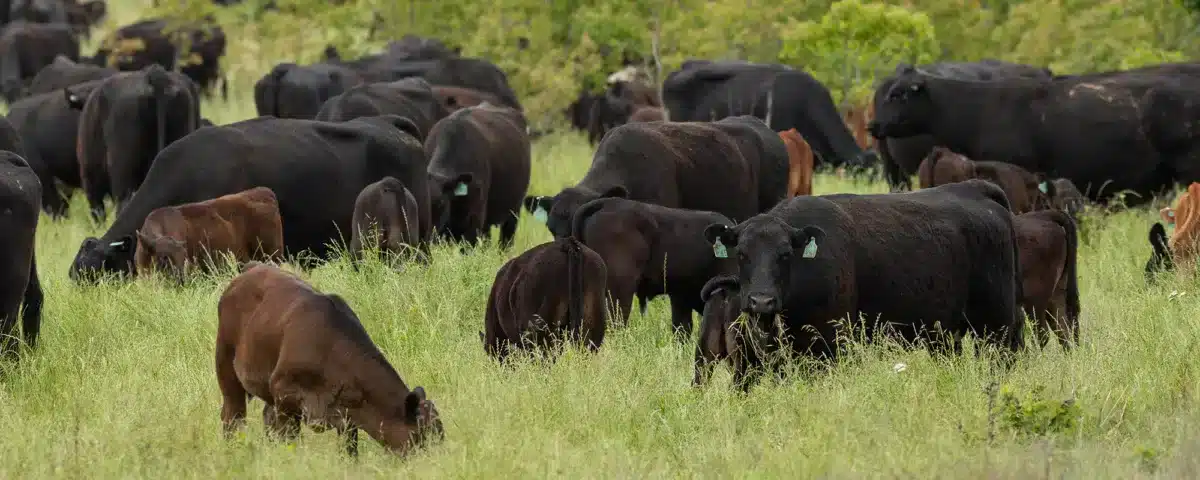We recently came across a very interesting interview on adaptive grazing management with Dr Allen Williams in Acres U.S.A. Dr Williams is the founding partner of Understanding Ag, Grass Fed Insights, and a partner in Joyce Farms, Inc. He pioneered many of the early adaptive grazing protocols and forage finishing techniques. Today, Allen and his colleagues specialise in whole farm and ranch planning based on the concept of regenerative agriculture. In this article, we highlight key points from the interview with Dr Williams in Acres U.S.A:
Dr Williams grew up on his family’s farm in the Piedmont Region of South Carolina. The farm was diverse, with beef cattle, pastured pigs, sheep and goats, chickens, turkeys, ducks and pheasants. They also grew extensive market gardens. The family farm didn’t use copious amounts of fertiliser, didn’t use pharmaceuticals, a lot of feed additives or fungicides or pesticides.
Our soils and ecosystems have been severely degraded
Although speaking from an American context, Dr Williams highlights that damaged soil and ecosystems are not just affecting rural communities and their health and their economies, but also lead to the production of foods that are not as nutrient-dense as they could be.
All farmers should follow the six principles of soil health
- Keep the soil covered – we need living roots growing in the ground to cover the soil and provide biological activity
- Minimise soil disturbance – These days, we’ve got giant equipment that’s creating more and more ways to disturb the soil quicker, releasing enormous amounts of carbon into the atmosphere
- Increase crop diversity – Row-cropping operations lead to monoculture and low rotation diversity
- Keep living roots in the soil year-round
- Integrate livestock – crop farmers should integrate livestock into everything that they do
- Context – If you do not understand your context, you can never be regenerative or develop healthy soil
READ MORE: How to Improve Soil Health in Agricultural Systems
What is adaptive grazing?
Adaptive grazing is a system of grazing that allows farmers to rapidly adjust to changing conditions, allowing them to meet multiple goals and objectives all at the same time.
This is in contrast to rigid rotational grazing that doesn’t work in real nature when you’re dealing with biology.
Adaptive grazing isn’t just for cattle. It covers chickens, pastured pigs, lamb, sheep, goats; whatever species of livestock you want to add to the mix.
The difference between adaptive grazing and rotational grazing
Adaptive grazing takes into account the size of the herd, the amount they consume on a daily basis, as well as the height and percent ground cover of the forages. Doing a bit of maths then gives the farmer an idea of how big an area is needed for a 24-hour graze.
Rotational grazing is more of a “prescription” – animals are turned out on a large area, graze there until they’ve grazed what the farmer wishes to achieve, then they move on.
Adaptive grazing is more intentional, allowing the farmer to effectively fight invasive species, get a concentrated amount of urine and manure in an area, and accurately control how much of the forage is eaten. It is a vital tool in the regenerative farming armoury.
What is adaptive multi-paddock grazing?
Adaptive multi-paddock grazing (AMP grazing) is a form of rotational grazing that uses high livestock densities to graze one paddock at a time while other paddocks recover. Unlike purely rotational grazing, the system is not scheduled or prescriptive; rather, the farmer moves the animals in response to how the land and life respond. This mimics the natural pattern of dense herds of wild ruminants that move frequently by the forces of predation and food availability.
Adaptive grazing is thus highly observant and adaptive, and has been shown to sequester more soil carbon than traditional continuous and rotational grazing.
Reversing the degradation of our soils by transitioning to regenerative agricultural practices
Dr Williams teaches farmers the six soil health principles as well as what he calls the three principles of adaptive stewardship and adaptive grazing management:
- Compounding
- Diversity
- Disruption
“That is your roadmap to rebuilding soil health and being truly regenerative and profitable,” he says.
FURTHER READING: How to Transition to Sustainable Farming Techniques
What are the benefits of adaptive grazing?
- Grazing properly creates dense, thick swards of forage with multiple plants species that are feeding biology in the soil
- The mycorrhizal fungi and bacteria and all of the organisms that produce the biotic glues that aggregate these soil particles
- When rain falls, instead of pounding and pulling and running off and taking topsoil and nitrates and phosphate with it, it can now infiltrate into the soil and be retained in the rhizosphere and root zone in the soil
- This enhanced the health and fertility of the soil leads to better yield and a more sustainable approach to agriculture
READ MORE: The Benefits Of Regenerative Farming For Livestock
“When our cattle are grazing properly, they’re creating biology in the soil that aggregates soil particles so that the soil infiltrates and retains a lot more water. With proper livestock grazing, we are finding that we are actually recharging the aquifer and recreating natural springs that have dried up and disappeared. With adaptive grazing, we don’t have the erosion, the sediment leaching or the nitrate and phosphate leaching or runoff. And with every bite that livestock take, we’re creating incredible photosynthetic activity in those plants that is a magnet for more rainfall on that area and cycle more water there.” – Dr Alllen Williams
Want to learn more about regenerative farming and soil health? Get in touch with the team at Zylem, who would love to assist you on your regenerative farming journey.

About the Author: Alex Platt
Alex is Business Development Manager at Zylem. He’s inspired by the potential of regenerative farming and takes a special interest in the technology and products that are moving agriculture in a more sustainable direction.

